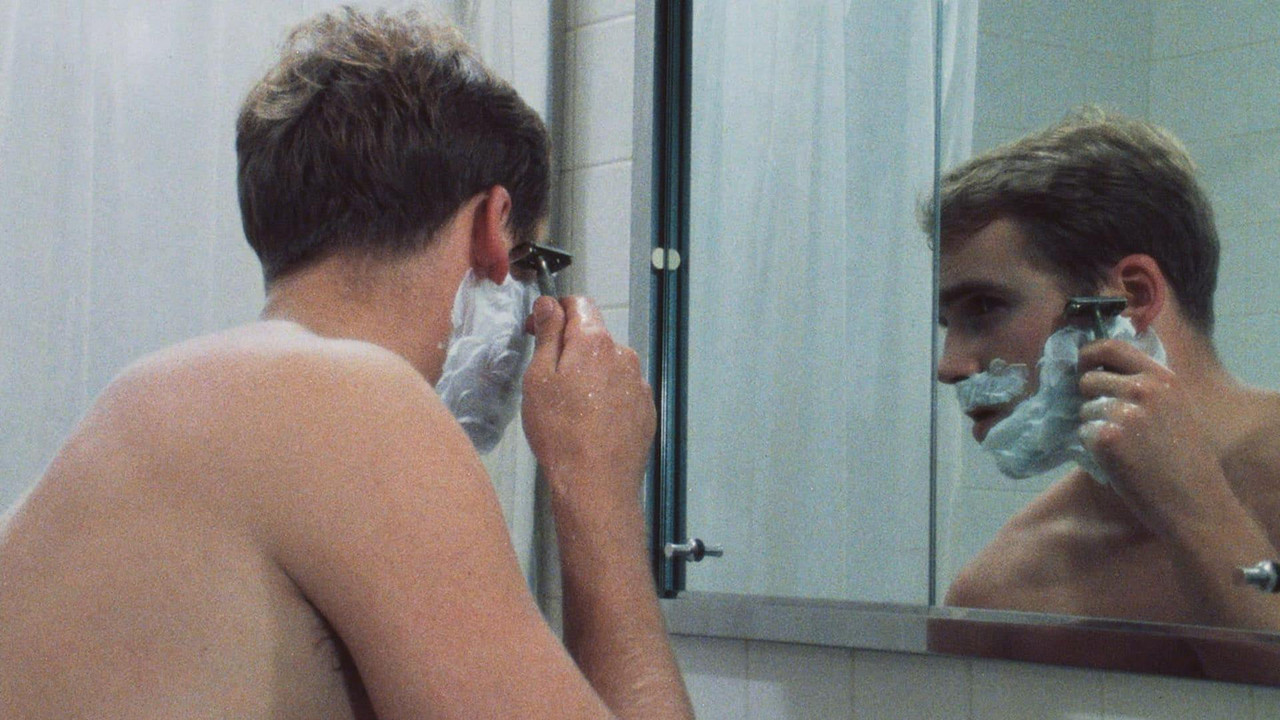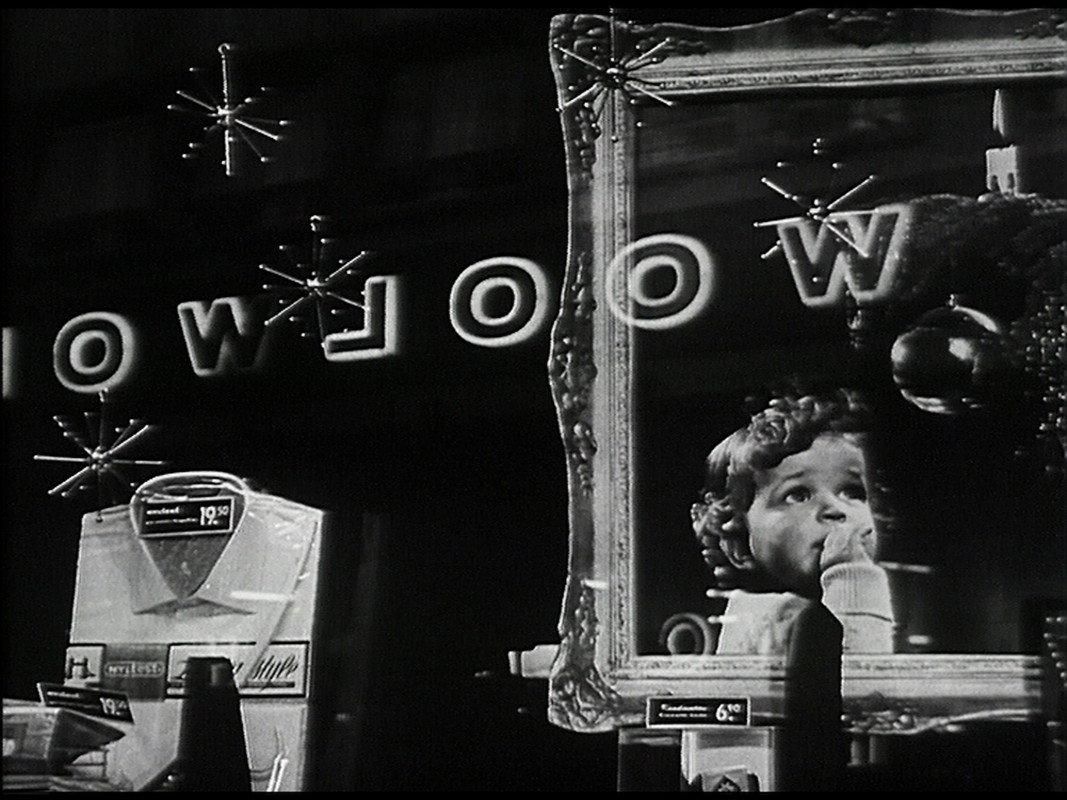“I've been consulted by Franklin D.,
Gretta Garbo has had me to tea,
Still I'm broken hearted,
Cause I can't get it started,
With you”The Big Shave [The Big Shave… or, Viet '67] (Martin Scorsese, 1967)
Dec
2
Safety Razor Day

A young man (Peter Bernuth) shaving in front of a mirror. The bathroom is clean, white, with chrome fixtures. DP: Ares Demertzis.
Someone shaves on Safety Razor Day (USA)
Accompanied by the sweet tunes of Bunny Berigan and Ira Gershwin's I Can't Get Started, a young man shaves his face. The Big Shave is a short commissioned film which contains many of the hallmarks of Martin Scorsese's later, more accessible work.
–Ira Gershwin, I Can't Get Started (1936)
There's also the obvious influence of #KennethAnger to be found, in nostalgic show tunes, the fetishisation of chrome and clean lines, followed by lustful, by ways erotic, violence. #Scorsese theme here is not homoeroticism, not on the surface at least, but the carnage laid upon so many young men sent off to the smouldering battlefields of #Vietnam. There'd be another six years of that. And meanwhile, some young men came back. And some picked up a job, driving a cab.
1960s
“There is no why for my making films. I just liked the twitters of the machine, and since it was an extension of painting for me, I tried it and loved it. In painting I never liked the staid and static, always looked for what would change the source of light and stance, using glitters, glass beads, luminous paint, so the camera was a natural for me to try—but how expensive!”Lights (Marie Menken, 1966)
Dec
1
National Christmas Lights Day

A display of what appear to be red, yellow, green and blue bell-shaped Christmas lights among silhouetted tree branches. DP: Marie Menken.
Christmas lights for National Christmas Lights Day (USA)
It took experimental filmmaker Marie Menken three years to shoot Lights. From midnight until 1 AM, she filmed New York's window displays during the holiday season, using her camera, motion, colour, and available light sources as her paintbrush.
– Marie Menken, c. 1966
Filming at night helped to avoid unwanted interruptions of people and cars, but turned out to be problematic for her hand-cranked #Bolex, which kept stalling in NYC's icy winter nights.
1999 A.D. (Lee Madden, 1967)
Nov
27
Cyber Monday

Mother Karen (Marj Dusay) taking a break from online food planning by shopping for a new wardrobe for everyone but herself. DP: Vilmos Zsigmond.
Shopping online on Cyber Monday
In the soul crushing future of 1999, one heroic nuclear family bravely fulfils their gender-specific duties. While Father Mike works in his computer-aided office, Son Jamie fails at computer homeschool and Mother Karen slavishly shops, cooks, and cleans as if the 70s never happened.
Thankfully, the future turned out to be even bleaker.
Weihnacht (Roland Klick, 1963)
Nov
24
Black Friday

The miracle of Christmas, as seen in a fancy shop window. A dress shirt is on display among Sputnik-style decorations and an entranced toddler is reflected in a gilded mirror. From across the street, “Woolworth's” in neon text bounces off the window pane. DPs: Jochen Cerhak & Roland Klick.
Holiday shopping on Black Friday (once just the USA, now this pest is everywhere)
A little boy takes in the magic of pre-Christmas, while the adults rush and worry about all that must to be bought.
O slavnosti a hostech [A Report on the Party and Guests] (Jan Němec, 1966)
Nov
22
grapes

A man in tuxedo removes a grape seed from his mouth. He's seated at a wonderfully opulently set table in a birch forest. DP: Jaromír Šofr.
“So will someone tell me what happened or not? A brother shouldn't turn against his brother. And a guest shouldn't turn against a guest.”O slavnosti a hostech [A Report on the Party and Guests] (Jan Němec, 1966)
Nov
22
Bales' Birthday

The birthday party mingled in with the others in the woods, all dressed immaculately and seated at elaborately decked tables. The guests and their host raise their glasses towards the camera. DP: Jaromír Šofr.
A birthday party for OP Bales’ birthday!
– the host
Tätowierung [Tattoo / The Delinquent] (Johannes Schaaf, 1967)
Nov
18
National Adoption Day

Benno (Christof Wackernagel), a pensive young man with dark hair and dark eyes. DPs: Petrus R. Schlömp & Wolf Wirth.
16 year old Benno (Christof Wackernagel) lives in a reformatory until the Lohmanns, a rich middle-aged #WestBerlin business couple decides to adopt him. A new world opens up, one of adulthood and responsibility. For the teenager, this neatly regulated new bourgeois life feels all wrong.
Muloorina (David Cobham, 1964)
Nov
17
Guinness World Records Day

The Bluebird parked amongst the crew's Jeeps. DPs: John Daniell, Ross King, Frank McKechnie, Ian Millar & Bob Wright.
Short in gorgeous Technicolor, Muloorina tells about a small, arid town in Australia that one day finds itself on the world's stage. Kati Thanda–Lake Eyre, a local salt lake that hasn't seen a drop of rain in nine years, is the perfect spot for a landspeed record attempt by British daredevil Donald Campbell and his Bluebird.
A play of contrasts. The supersonic blue machine on the ancient white riverbed and the slowness of the eternal landscape versus something faster than should be possible. And meanwhile, the locals care for their land and animals, and wait for rain.
“Fame will go by, and so long, I've had you, fame.”Something's Got to Give (George Cukor, 1962)
Nov
10
Forget-Me-Not Day

Marilyn on set during the infamous pool scene, four days days after singing Happy Birthday at JFK's birthday gala. DPs: Franz Planer & Leo Tover.
Everyone assumed that Ellen Arden, swept away during a yacht race, was gone. But there she is, years later, and very much alive.
– Marilyn Monroe, 1962
The story ends on August 4, 1962, almost two months after she was fired from the shoot. Marilyn Monroe was found dead in her home. She was 36 years old.
“If one can't be saint, it's better to be damned.”Matka Joanna od Aniolów [Mother Joan of the Angels] (Jerzy Kawalerowicz, 1961)
Nov
9
Chaos Never Dies Day

A possessed nun in white spinning on her axis among her sisters. Black clad priests in the background observe the scene. DP: Jerzy Wójcik.
Four years after the tragic events at Loudun. Mother superior, the titular Mother Joan, is still possessed by the Devil and has slowly pulled in the other sisters. A priest, the fourth one, is send to the convent to exorcise the demons who at this point have possessed all but one sister. Chaos ensues.
– Mother Joan of the Angels